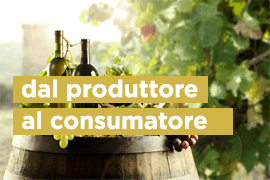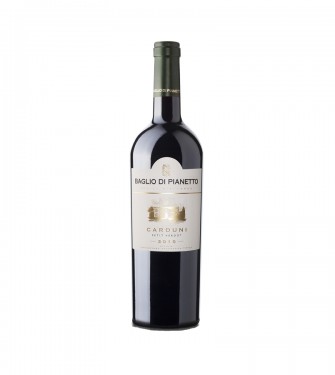products listing page
Petit Verdot WINES
The Petit Verdot vine is originally from Médoc in France but is very common in other places including California. In Italy it mostly grows in the Maremma Livornese, Maremma Grossetana and some parts of Lazio. (continue)
-
Carduni - Petit Verdot Baglio di Pianetto
Baglio di Pianetto
Carduni is the term used to indicate the Sicilian thistles. The abundant presence of these plants drew the attention of Count Paolo Marzotto during one of his first visits to the estate Pianetto. The Count realized that these plots would have been ideal for the cultivation of grapes Petit Verdot, given the high presence of iron in the soil where thistles usually grow. Multifaceted, intriguing, rich and complex wine. It combines the characteristics of the soil, climate and grape variety by providing an intense and elegant experience. Grape Petit Verdot Learn More€ 30,44€ 25,87 -15%
Petit Verdot WINE
The Petit Verdot vine is originally from Médoc in France but is very common in other places including California. In Italy it mostly grows in the Maremma Livornese, Maremma Grossetana and some parts of Lazio. In France it is used to make other wines such as Merlot and Cabernet for a more structured and complex flavour. It is a hard vine to cultivate and bizarrely it grows best when it is far from its original location. This is the case because the Italian climate is much more favourable and vines need extremely fertile terrains, mild temperatures and little rain to flourish. Agro Pontino is an optimum geographical area from that perspective and the final result is an excellent wine that can be aged in the cellar or mixed with other wines.The vine and wine-making
The best vines grow on the mountains of Lazio where the ideal climate ensures the grapes grow extremely ripe. The grapes are hand-picked and only when they have properly ripened.The wine is then made with the ‘submerged cap’ method in order extract the sweeter tannins and give it a natural tone. The grape juice is left to ferment for approximately 15 days at temperatures between 26° and 28° before using the ‘delestage’ technique to ensure the wine takes on a stable colour and soft tannins. The delestage technique includes the partial racking of the must and wine-makers transfer part of the fermenting must into other containers to then pour the liquid back into the initial tank.
This method greatly assists in oxygenating the wine and giving it the right amount of tannins and correct colour.
After the racking, the fermentation takes place in stainless steel tubs or French oak barrels.
The wine is aged in the barrels for 6/8 months in order for it to develop an interesting bouquet.
Organoleptic properties
Petit Verdot has a lovely ruby-red colour and intense bouquet of fruits of the forest with an aromatic aftertaste of white pepper and spices.It has an extremely elegant structure and soft and warming tannic tones.
The ideal temperature for serving this wine is the natural cool of a wine cellar.
Serving suggestions
Petit Verdot is suited to an infinite variety of dishes ranging from the very simple, such as soups and local specialities to more elaborate meals.It is ideal with roast meat and game as well as seasonal, spicy or flavoured cheeses.










